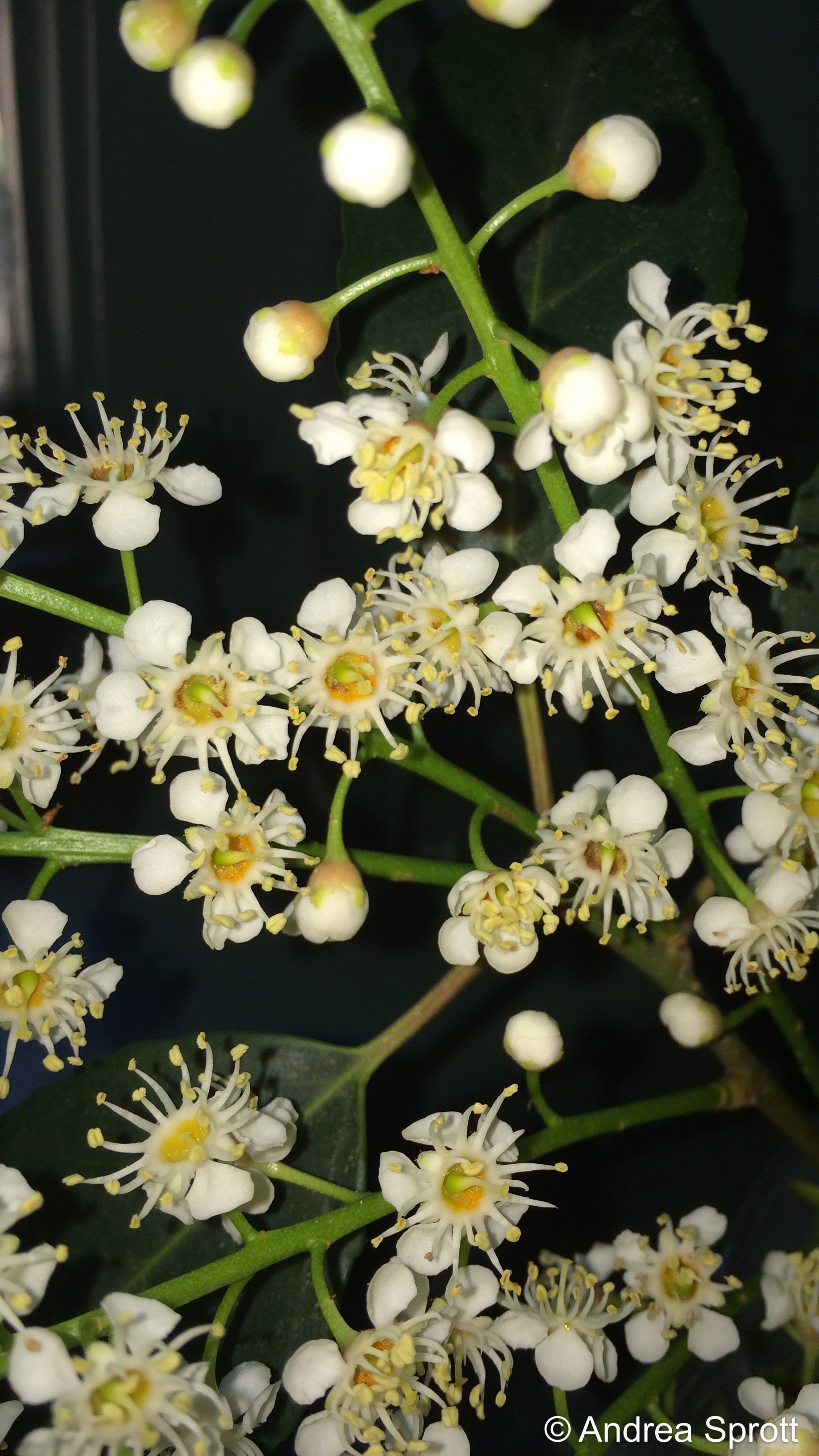Botanical Mystery Solved!
"I love being asked to identify plants, and I don’t know which gives me more pleasure: to know what they are or not to know what they are."
- Elizabeth Lawrence, Charlotte Observer, February 23, 1969
As I stood in Elizabeth Lawrence's garden on a sunny Saturday in early May, talking with Katie Mullen (former Elizabeth Lawrence Garden Associate and Marco Polo Stufano Fellow), I noticed blooms in the top of a narrowly conical evergreen tree on the east property line. This was the first time I had seen any blooms on this tree since I've worked here. I interrupted myself mid-sentence to point it out to Katie. "I've been thinking that was some sort of Gordonia—loosely according to Elizabeth's records and not having seen a bloom—but that's no Gordonia." I could feel the rush of adrenaline. I just adore solving a good botanical mystery!
What’s this? Not a Gordonia…
We immediately went over to it and struggled to pull a branch down just far enough to snip off some small flowering stems. We took the blooms into Elizabeth’s studio for closer examination and easier access to her index card database and bloom journals. (That is usually the first place I go to solve botanical mysteries in her garden.)
Katie whipped out her smartphone and started searching online. She noted that the bark reminded her of a Prunus. She followed her instincts, delving deeper into the cyberspace library as I, in true luddite fashion, flipped through Elizabeth's index cards. No more than two minutes passed when Katie landed on a blog post and began reading the description given there of Prunus lyonii. Sure enough, the flowers matched up beautifully to what was blooming here—a raceme of sweetly fragrant, white, wax-flower-esque blooms. I imagine if I paid closer attention to an ever-present landscaper favorite go-to foundation shrub, Otto Luyken laurel, their flowers would be much the same.
So that helped narrow my search of Elizabeth's records, but I wasn't totally convinced of the tree's identity, yet. I came across an index card describing Prunus illicifolia, which nearly perfectly fit the tree that stands like a rocket hiding behind two large Camellias. But the evergreen leaves of the tree in the garden are only 2 1/2" long... shorter than those described. I turned to Elizabeth's reference library for confirmation, plucking The Flowering Trees of California off the shelf. There, I found exactly what I needed: the exact match of the plant before me: Prunus illicifolia ssp. lyonii. Eureka!
Although I was a little sad that the internet seemed to initially trump a good old-fashioned paper search, it really only more quickly lighted the narrowing paper trail which ultimately led to the answer. Regardless, the mystery is now solved. After years of admiring this fairly small but statuesque broad-leaved evergreen tree, knowing its true identity is a small triumph—another small piece of the puzzle of Elizabeth Lawrence's garden... this amazing garden that still provides plenty of inspiration, discovery and botanical mysteries.
Until next time, I remain
Yours in Dirt,
Andrea


